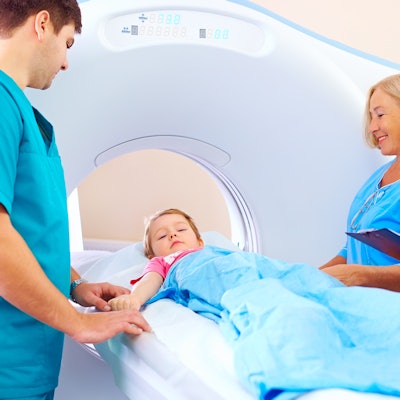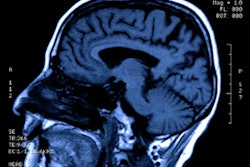
Although pediatric emergency departments (EDs) performed fewer CT exams between 2009 and 2018, their utilization of advanced imaging increased overall due to expanded use of MRI and ultrasound exams, according to research published online August 3 in JAMA Pediatrics.
A research team led by Dr. Jennifer Marin of UPMC Children's Hospital of Pittsburgh assessed the change in CT, ultrasound, and MRI rates in over 26 million ED visits archived in the Pediatric Health Information System administrative database from January 1, 2009, to December 31, 2018.
They found that the proportion of pediatric ED encounters that resulted in a CT exam decreased amid expanded use of ultrasound and MRI. But there was also considerable variation in utilization between practices.
"The magnitude of the decrease in CT use varied by site and was associated, in part, with the use of alternative advanced imaging modalities for certain diagnoses, most notably ultrasonography for abdominal conditions," they wrote. "Future efforts appear to be needed to standardize imaging approaches and evaluate the effect of the changing
landscape of advanced imaging on patient-level outcomes."
| Change in use of advanced imaging in pediatric ED | ||
| 2009 | 2018 | |
| At least one advanced imaging study | 6.4% | 8.7% |
| CT | 3.9% | 2.9% |
| Ultrasound | 2.5% | 5.8% |
| MRI | 0.3% | 0.6% |
Delving further into the data, the researchers found that most of the decrease in CT occurred in eight all patient-refined diagnosis-related groups (APR-DRGs), led by concussion (-23%), appendectomy (-14.9%), ventricular shunt procedures (-13.3%), and migraine and other headaches (-12.4%). Declines in CT use also occurred in other disorders of the nervous system (-10.1%); abdominal pain (-6.1%); other ear, nose, mouth, throat, and cranial or facial diagnoses (-5.9%); and seizure (-5.3%).
The researchers also found that strategies to reduce abdominal CT use by performing ultrasound first for evaluating abdominal pain may be associated with the higher use of ultrasound for that application.
"Interestingly, the increase in the use of ultrasonography for these conditions was greater than the decrease in the use of CT," they wrote. "Therefore, a proportion of these ultrasonographic examinations likely represent overuse of a typically widely available and nonradiating imaging tool."
In other findings, the researchers observed wide variation among EDs in the use of ultrasound for appendectomy (median 57.5%), as well as MRI (median 15.8%) and CT (median 69.5%) for ventricular shunt procedures.
In terms of outcomes, the researchers found that hospitalization and three-day ED revisits decreased during the study period. However, the ED length of stay did not change.
While it's encouraging that lower utilization of CT avoided radiation exposure in nearly 28,000 fewer kids, the increase in the number of children receiving at least one form of advanced imaging was less encouraging from a healthcare value perspective, according to an accompanying editorial by Dr. Alan Schroeder and Dr. Alan Imler of Stanford University in Palo Alto, CA.
Although outcomes appeared to have improved somewhat during the study period, other secular trends -- such as heightened public awareness of concussions -- might also explain those outcomes, wrote Schroeder and Imler. Increased imaging among patients who were ultimately hospitalized also further suggests that the more imaging is not associated with reduced hospitalization.



.fFmgij6Hin.png?auto=compress%2Cformat&fit=crop&h=100&q=70&w=100)





.fFmgij6Hin.png?auto=compress%2Cformat&fit=crop&h=167&q=70&w=250)











